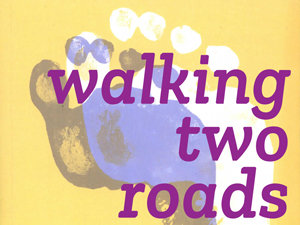Hans van Rappard
5 ― From: Rappard, H. van (2009). Walking Two Roads ― Accord and Separation In Chinese and Western Thought. Amsterdam: VU University Press. Chapter 2, pp. 55-65.
part 1 – part 2 – part 3 – part 4 – part 5 – part 6 – part 7 – part 8 – part 9 – part 10 – part 11 – part 12 – part 13 – part 14 – part 15 – part 16 – part 17
Introduction
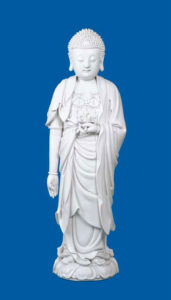
Following Reichelt then, the rest of this paper will be spent trying to see the Chinese heart-mind in the light of Buddhism. Fortunately, to achieve this we do not need an exhaustive tour of it; one part of its extensive doctrines, the Skandha formula will be largely sufficient for the limited objective we have set ourselves.
Moreover, we will not be concerned with the various doctrinal emphases laid by Buddhism’s Theravada and Mahayana branches or with specific schools because the Skandha doctrine is shared by all followers.
On the other hand, the drawback of our limited perspective is that one particular doctrine is treated in isolation rather than in its interconnection with Buddhism in its entirety. Admittedly, this procedure does not sit well with its basic tenets, but I think that it can be allowed for present purposes. A fuller picture will be presented in chapter four.
By way of preparation for the topics discussed here and also in a coming paper I would like to suggest a little experiment. Sit down in an easy chair and think that for the next, say, twenty minutes there is nothing that has to be done …
Has the sitting been quiet? Unlikely. An unsettling number of thoughts, often about wildly unexpected topics, some juicy, some decidedly less so, probably crossed the mind. Mostly they did just that: they crossed quickly and were immediately succeeded by new thoughts. The supply seemed inexhaustible ― who knows where they sprout from? But it wasn’t long before boredom set in, followed by restlessness, and fairly quickly one ended up seeking for a sweet, comforting thought to hold on to. After a short while the urge to get up and do something, anything, became well nigh impossible to resist ― the terror of having nothing to do! Zhuangzi must have been familiar with this state, because he called it
“sitting but racing around.”[2]
Usually however, when pursuing one’s everyday business, one does not allow things to get to this point; thank heavens for cigarettes, the telly, the cell phone …
A summary of what was perceived might well be something along the lines of ‘movement and turmoil, then also agitation and urges’. After all, why should anyone in their right mind want to sit down and do nothing? Sheer waste of time.
As observed centuries ago by Blaise Pascal (1623-1662),
“the sole cause of man’s unhappiness is that he does not know how to stay quietly in his room.”[3]
The aggregates and I
Having to some extent familiarised ourselves with what is perhaps the most striking peculiarity of the human mind, we are in the position to turn to the skandha formula. As Buddhism sees it, human beings are composed of bundles of energies or forces, the so- called skandha, which translates as heaps or aggregates.
The five skandas
There are five of them, one physical and four mental ones. We will be mostly concerned with the mental aggregates, which between them constitute what we are used to call mind. Thus, one is struck right away with a highly significant difference between Buddhist and Western conceptions of mind: following the aggregate view mind is not a permanent entity but a dynamic combination of bundles of energies.
We will come back to the topic but turn now to the mental aggregates. There are four of them:
- feelings,
- perceptions, that is, sense-impressions, ideas, and concepts,
- mental and volitional formations,
and
- consciousness.
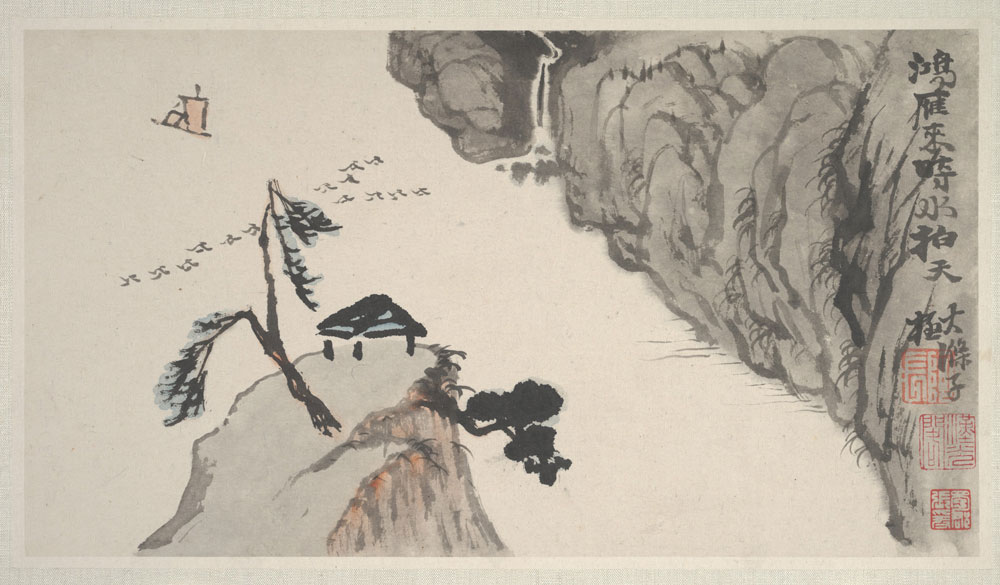
Feelings
We start with the aggregate of feelings.
All sensations are accompanied by pleasant, unpleasant or neutral feelings. Feelings are dependent on contact between the senses and their objects (and consciousness, but this will be discussed shortly). Thus, objects are seen, sounds heard, and so on. But next to the five senses that we are familiar with Buddhism assumes yet another one, the mental sense, which cognises mental objects or thoughts.
Perceptions
The aggregate of perceptions recognises the physical and mental objects that feeling has made us conscious of. Because perception takes the distinctive marks of these objects and so distinguishes them from other objects its function may also be called discrimination. Moreover, since the memories of these marks enable us to recognise the discriminated objects, perception inevitably involves memory.
Mental and volitional formations
Next comes the aggregate of the mental and volitional formations. It comprises the so-called mental factors, such as opinions, desires, aversions, attitudes, and especially volition (will) and intention, which are closely related. For the sake of brevity the mental and volitional formations will henceforth be called, formations.
Consciousness
Finally, there is the aggregate of consciousness. It was mentioned in passing that feelings depend on contact between a particular sense, its object, and its consciousness.
This innocuous statement means that sense objects, including thoughts, cannot be experienced without the functioning of their appropriate kind of consciousness. But on the other hand, it also means that the latter cannot function on their own accord; for consciousness to arise contact is required between a sense organ, including the mental sense, and its proper object.
Six consciousnesses
Six consciousnesses are distinguished, one for each of the five outer senses, while the sixth sense is perception with the mind (mano). It perceives thoughts, memories, emotions, and so on, in short, the whole mentation.
Buddhism sees the mind as a perceptual organ, just as the other sense organs, which means that thinking, emoting, wanting/rejecting, willing are all sense consciousnesses.
But one must keep in mind that the term sense organ does not primarily refer to the anatomical sense organs but to their function.
‘The aggregate of the five aggregates’
In sum then, what may be called ‘the aggregate of the five aggregates’ forms a dynamic and tightly interconnected system. It is worthy of note that because of this interconnection it would be pointless to detach one part of it in order to consider it separately on its own. But then, this does not only hold for the aggregate system; there will be ample opportunity to repeat this observation.
An important consequence of the interconnection between the aggregates is that they interact intimately. From the Western point of view this has far reaching consequences.
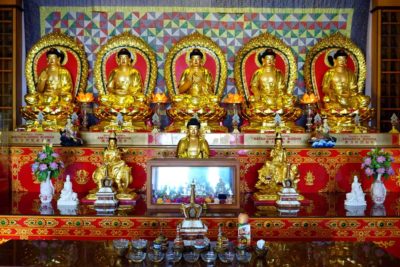
The first is that body and mind (the first and the second through fifth aggregates, respectively) cannot be separated. The mind-body dualism, which has not gone unchallenged but nevertheless still seems to reign supreme in Western thought has never had a place in Buddhism, and neither in Confucianism and Daoism come to that. The second consequence is that in the aggregate perspective thinking and emotion are not to be separated either and this is, incidentally, why the Chinese word xin has to be rendered as heart-mind. But we return to the aggregates.
Because the aggregates are so inextricably linked the contents of the fourth aggregate (thoughts and memories) can, and virtually always do intervene between the senses and their consciousness. Hence, Buddhism holds, most often we experience what is presented to the senses in an adulterated form. A huge wall of interpretations built of prior experiences and thoughts blocks and distorts the interaction between any particular consciousness and its corresponding sense-object.
I, ego, self
Consequently, we have little access to things as they really are, being well nigh continuously cut off from naked reality. Since the world is dressed up by us, and in a rather misleading guise at that, it may well be asked who the dresser is and where the emperor’s clothes come from. The Buddhist answer to both questions is the ego or self or, more concretely, it is that what you and I and everybody else is used to calling ‘I’ (henceforth I, ego, and self will be used interchangeably).
The notion of I is all important in Buddhism. It may be described as an enormous heap of memories or, to be a bit more specific, as a bundle of opinions, attachments, and intentions. But let us first take a closer look at the word bundle. The point is that the bundle metaphor does not suggest very much solidity and indeed, in contrast to the Western notion of it Buddhism conceives of the ego as a fragile and ultimately delusory entity. What is more, this illusion is not viewed as just one of the many unfortunate mistakes that fallible human beings are prone to make.
Rather to the contrary, the ego is considered to be the central delusion and as such the most important one of the human passions, which in Buddhism are called ‘fires’ (below). A word that is also used instead of the slightly moralistic word passions, is ‘appetites’. Western medieval philosophy also recognised the appetites and understood them as powers or tendencies
“to incline towards objects that are apprehended as good and away from objects that are known as not good”[6],
which seems an adequate description of the Buddhist fires. But we return to the ego-delusion. The misguided notion of I consists of the unfathomably deep conviction of being a separate entity, an independent, lasting ‘centre’, detached and isolated from everything that cannot be called me, my, or mine. ‘I’ is exclusive of ‘other’. One does not need to be a Buddhist to appreciate the point. It does not take much reflection to grasp the feeling of separateness, of being other than the buildings I see in front of me, the people in the street I am walking in, the knife I am cutting my sandwich with, and so on. Neither is it difficult to realise that the wobbly nature of the seemingly solid I is demonstrated umpteen times a day.
Just consider, when fully engaged in a game or job or book no separation is felt; one is not conscious of oneself as someone who is playing or working or reading. We will return to these topics but our treatment up until this point should be sufficient to understand the precarious nature of the self; indeed, life is none too easy for it.
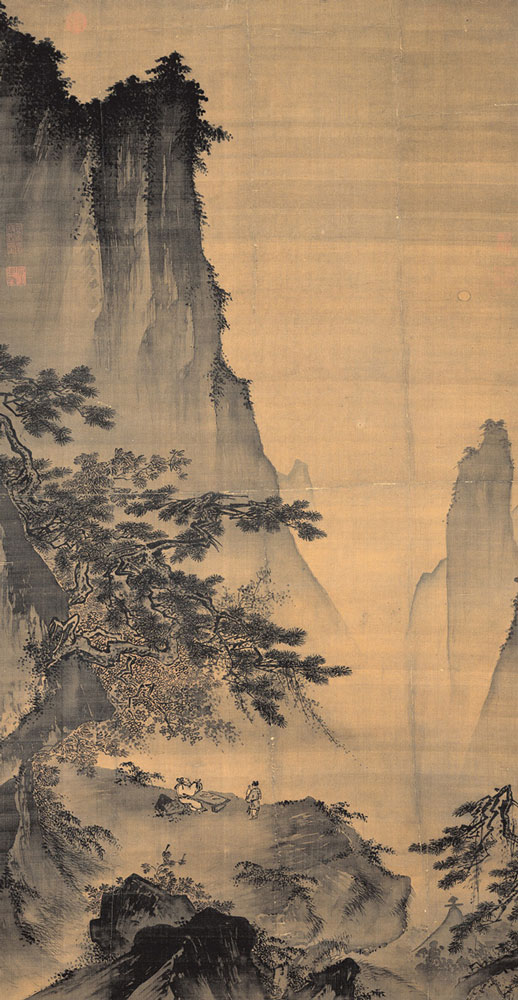
Twenty-four hours a day the poor thing is occupied with attempts at shoring itself up. Basically, two strategies may be employed in the struggle for self-maintenance. The first involves seeking to incorporate everything that is other-than-I, which comes down to an endless striving to organise one’s life and circumstances, meddling without pause to make them fit in with my hopes and fears.
The alternative strategy takes the opposite course and aims at the elimination of everything other, anxiously scouting all conceivable threats and preparing for their defusing. Thus, while the first strategy grasps and desires, the second one rejects and tries to keep things at bay. This means that the first strategy of the endangered I boils down to an inclination toward everything that is experienced as ‘other’, while the second one is essentially an inclination away from it. The inclinations toward and away, that is, greedy yes’s and terrified no’s constitute its basic options. But basically they amount to the same in that both drive the ego to ceaseless activity; whether rejecting or desiring, the ego manifests as relentless seeking, as the inability ― familiar to Pascal no less than Zhuangzi ― to be at rest in the present moment.
As mentioned with concern to Buddhist concepts in general, the options toward and away don’t make very much sense if they are considered on their own. The point is that they are intricately linked to the delusion of I.
I is a prison
The ego or I is a prison because it locks us into a rigid framework of attitudes and opinions, preventing us from responding freely to life as it presents itself from moment to moment. The I-delusion clings to opinions and things we identify with, ‘I am the owner of this car, I am the CEO of this firm, I am the chair of the So-and-so Society’.
All this is felt to be rightfully mine and makes me feel that I am something. So strong is this urge that I may even identify with negative opinions. However unpleasant the thought ‘I am worthless’ may be, if it makes me feel being special it may be preferred to a cheerful outlook if this carries the price of being no one at all.
A significant part of the prison erected by the I consists of its attitude toward opposites. As pointed out in the previous chapter, we strongly tend to split the opposites apart, separating good from bad, light from dark, high from low and to identify with one side and fight the other. But opposites can exist only because of the judgments I pass on the world ― what is really found there, however, is simply differences.
Indeed, a mountain is high and a valley is low; the difference is clear enough but at the same time it is entirely neutral in that it does not entail choice and evaluation. The difference between high and low does not form a pair of opposites until height is chosen rather than lowness. We are locked into thinking in terms of opposites because of our attitudes and opinions, which is, after all, an important part of the survival strategy of I.
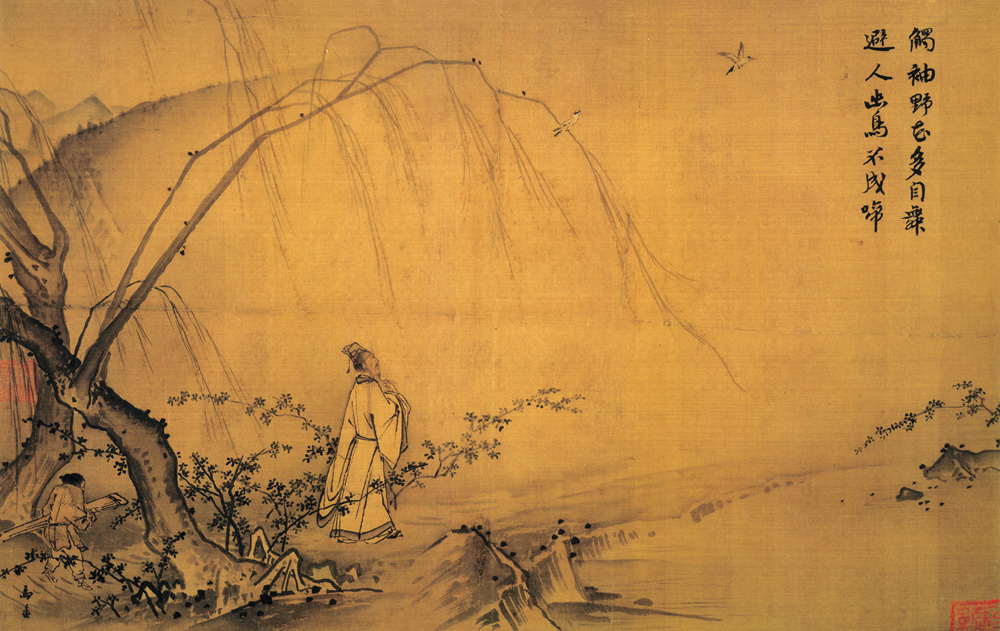
The Three Fires
If its existence was not basically insecure the ego would need no strategies to prop itself up. This is why along with the delusion of being a separate I, the desires and rejections are put together in the formula of the Three Fires.
The upshot of the interconnection between the fires is, somewhat ironically perhaps, that the task faced by the delusory I is to keep its own delusion going.
Remarkably, the following passage from the book written by the Daoist master Zhuangzi, though not nearly as articulate as Buddhism, seems to point to a fairly similar view of the human heart-mind.
“With everything [people]meet they become entangled. Day after day they use their minds in strife, sometimes grandiose, sometimes sly, sometimes petty. Their little fears are mean and trembly; their great fears are stunned and overwhelming. They bound off like an arrow or a crossbow pellet, certain that they are the arbiters of right and wrong. They cling to their position as though they had sworn before the gods, sure that they are holding on to victory. They fade like fall and winter ― such is the way they dwindle day by day. They drown in what they do ― you cannot make them turn back. They grow dark, as though sealed with seals ― such are the excesses of their old age. And when their minds draw near to death, nothing can restore them to the light. Joy, anger, grief, delight, worry, regret, fickleness, inflexibility, modesty, wilfulness, candor, insolence ― music from empty holes, mushrooms springing up in dampness, day and night replacing each other before us, and no one knows where they sprout from … morning and evening we have them, and they are the means by which we live. Without them we [our egos]would not exist; without us [our egos]they would have nothing to take hold of’.[9]
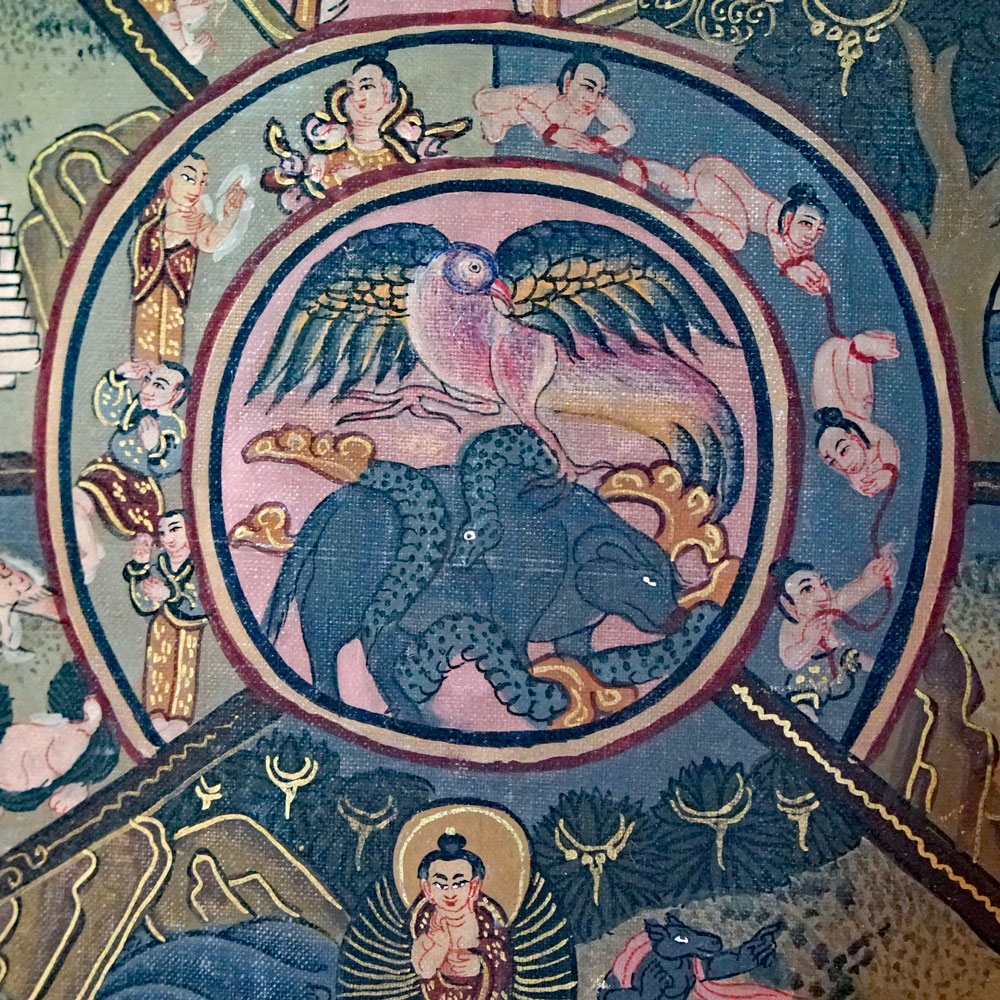
Chinese Buddhists who took up Zhuangzi’s book, and there have been many who did, may well have nodded approvingly on reading this. But at the same time they might have concluded that their religion went a step further because it states in no uncertain terms that Zhuangzi’s ‘music from empty holes’ sprouts from the formations (aggregate four) energised by the fires.
In the last Buddhist analysis clinging, anger, wilfulness and what have you are instances of the ego. Day and night we have them, and without them we would not live. Quite so, Buddhists might well acclaim at this point. Moreover, what Zhuangzi says about ‘using our minds in strife’ is a shining example of what Buddhism calls suffering, that is, the ego’s feeling of separation and hence, the friction and strife that characterise our dealings with the world. Indeed, Buddhists might finally have added, once the ego has arisen, there is old age and death.
Consciousness and I
According to the aggregate view, the function of the sixth consciousness is to perceive the consciousnesses of the other mental aggregates. The postulation of this consciousness (mano) entails that in contradistinction to the Western view, the mental realm is accorded the same status as the physical realm, that is, it is considered to be just as objective as the world of forms, sounds, smells, etc.
The equal status of both realms entails that since the ego obviously does not coincide with the objects of the physical senses, it does not coincide with those of the sixth consciousness either. In other words, just as I am not the tree perceived ‘out there’, I am neither the emotions sensed or the thoughts thought ‘in here’. Much like in Confucius (above), there is no separate subjective world. In principle the mental world is just as objective as the realm of the physical senses; in both realms phenomena arise due to the prevailing conditions and are simply reflected by the six senses. The use here of in principle is not a slip of the pen. The point is that in actual practice an objective mental world rarely if ever obtains. The reason why this should be so is that when it is invaded and ‘fired’ by the appetites, as happens almost continuously, the mental picture is altered drastically. A different realm springs into existence, a world that must be called subjective in as much as it is coloured and distorted by emotions, that is, ‘my’ irresistible wants or rejections. Unwittingly, consciousness has become blinded and cannot see clearly anymore. The object sought or shunned is perceived as warranting action towards or away from it and an intention to act accordingly is formed. Indeed, as Merton saw,
“the intellect is only theoretically independent of desire and appetite … It is constantly blinded and perverted by the ends and aims of passions.”[10]
The six consciousnesses, one recalls, are all sense consciousnesses. But this term may be misleading in that we are not necessarily conscious of them. Sense consciousness arises continuously whether we are aware of it or not. There is a constant stream of consciousness flowing through all six senses but most of it is not registered. When sitting in a chair for instance, one is not continuously aware of the contact between one’s bum and the seat of the chair although its sense consciousness is active all the time. However, if conscious awareness arises that something is felt or seen or thought this signifies the activity of reflection (sati).
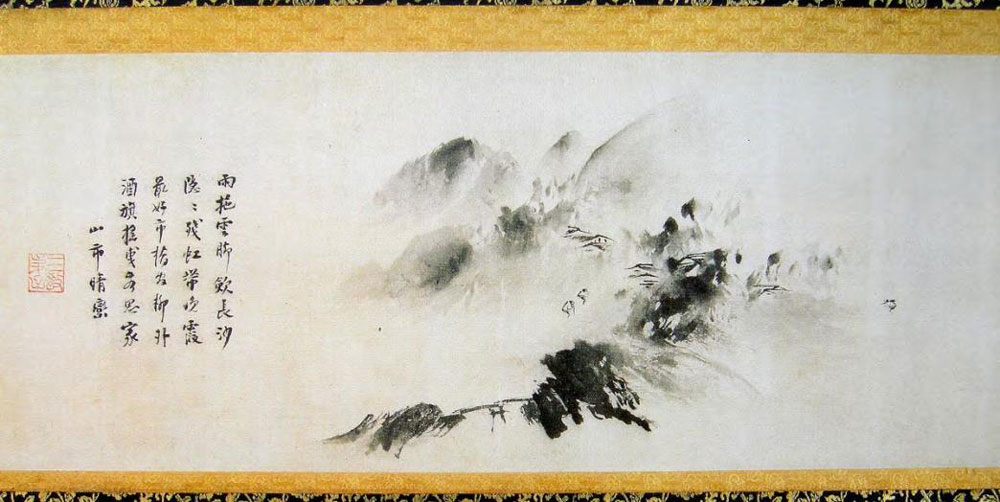
Consciousness — vijnana
Human beings are capable of reflection, the ability to ‘turn back upon’ experiences and other states of consciousness and thus become aware of them. This is a tremendously important function because without it we would not be able to get on with our lives. If we were incapable of turning back upon consciousness, it would be impossible to solve problems, plan future activities or take account of our deeds, thoughts, and inner states. But however important, in the Buddhist view we may, and usually do pay a price for this faculty.
The Sanskrit word for consciousness is vijnana, in which the syllable vi refers to the ‘discriminating’ function of consciousness. Here discrimination means that knowing or being conscious implies a separation of the knowing consciousness and the object known; in other words, a separation of subject and object.[12]
After all, consciousness cannot but be consciousness of something and this also holds for the ‘conscious consciousness’ caused by sati. This means that when reflecting, consciousness becomes conscious of thoughts and other states of mind, creating a separation between the latter and the consciousness of them. As mentioned, this enables human beings to think and realise what they are doing and where they are going and to account for it. But the downside is that when poked up by the fires reflection is bound to go the wrong way, creating a view of consciousness as split between subject and object, thinker and thoughts, ego and likes/dislikes, and so on. Reflection, in other words, is a two-faced function. On the one hand, it makes for an indispensable instrument to navigate through life but on the other hand, when the fires kick in it fashions the notion of a separate I.
Buddhism does not deny the empirical reality of I, ego, or self but sees it ultimately as mere deception. Even if the I appears all too real in daily life, it says, in the final analysis it is but a function of consciousness. An important consequence of this view is that in contradistinction to its Western counterpart, the ego does not coincide with consciousness. The I is after all but a function of consciousness and the latter is endlessly wider than it.
In other words, the ego is not the only one who lives in the mental house and what’s more, it is by no means its most esteemed tenant. It is important to see that from the perspective of the aggregate scheme consciousness appears to be far more comprehensive than the I. Moreover, the I is weaker than its modern counterpart in the West and perhaps this is only logical. If the ego is not the sole occupant of the house there would seem to be no immediate reason to deem it all-important but on the other hand, when it is considered to live independently on its own it is more likely to be of the highest significance.
Digression to Western thinking
Digression. At this point I want to make a digression to the Western world. Although the ancient Greek and Chinese views of ego and consciousness were already different, the modern Western notions of them have evolved much beyond their Greek beginnings.
Descartes
A crucial thinker in this development is René Descartes (1596-1650). Among Descartes’ many intellectual exploits it is his search for philosophical truth that is important here.
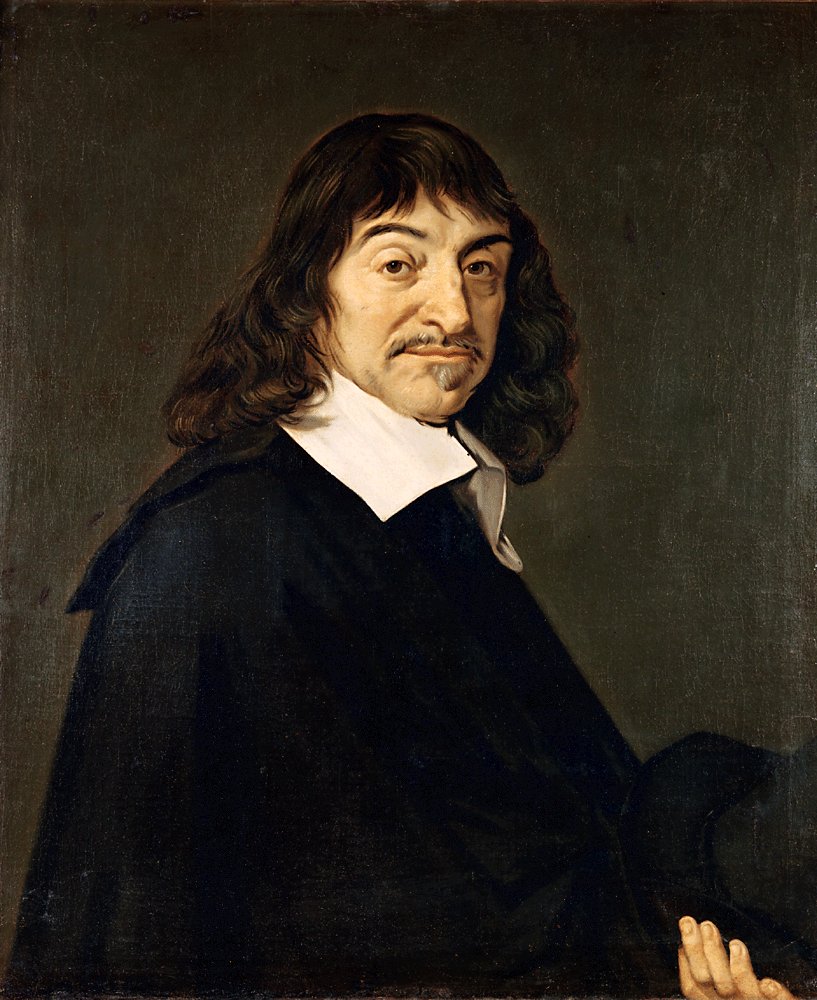
Briefly, he decided to doubt all knowledge that could possibly be doubted in order to accept as certain only what did not allow of doubt. After a long process of what he called meditation Descartes found that the only knowledge that could not be subjected to doubt was the doubt itself. When doubting, or as he also said, thinking, that very doubt or thought cannot at the same time be doubted. What is more,
“we cannot doubt our existence without existing while we doubt.”[14]
Taking this certainty for his point of departure Descartes arrived at the conclusion
“I think, therefore I am.”[15]
It is worthy of note that in contradistinction to what was said on consciousness and the I according to the aggregate scheme, for Descartes the I and thinking coincide.
“I am, I exist, that is certain”, he said and wondered, “But how often? Just when I think ….”[16]
It is the certainty of his own thinking that allows Descartes to infer that it is I that thinks. This is so evident to him that no explanation is needed. Interestingly, since it is only certain that ‘I am’ when ‘I think’, the celebrated Western mantra ‘I think, therefore I am’ also allows an interpretation as ‘the thinking is the I’, which would be in full agreement with Buddhism although it would probably add that consciousness is inconceivably much wider than I.
However, in Descartes and the many philosophers influenced by him the latter fully coincides with consciousness. Now, from the aggregate point of view it should be asked if Descartes actually perceived ‘his I’. The answer is no. Descartes found no I amongst the thoughts that he so ruthlessly subjected to doubt; he only inferred there was such an entity. Thus, it has been joked, what he should have said is, ‘I think, therefore I am, I think’. What Descartes did perceive in his meditations were just thoughts.
Hume

A century later this was realised by David Hume (1711-1776), who testified ― as will anyone quietly sitting in their chair ― that whenever he entered into
“… what I call myself, I always stumble on some particular perception or other, of heat or cold, light or shade, love or hatred, pain or pleasure. I never can catch myself at any time without a perception, and never can observe anything but the perception … [people]are nothing but a bundle [sic!] or collection of different perceptions, which succeed each other with an inconceivable rapidity, and are in a perpetual flux and movement.”[18]
Philosophically, Hume was far ahead of his time but when our concern is not with philosophy but with how modern people actually experience themselves Descartes appears still alive and kicking. More than that, four hundred years on he seems to be kicking even harder. We will return to him in the next chapter.
- Bell, D.A. (2008). China’s new Confucianism. Princeton: Princeton U.P.
- Blowers, G., Cheung, B.T. & Ru, (2009). Emulation vs. indigenization in the reception of western psychology in Republican China: An analysis of the content of Chinese psychology journals (1922- 1937)-Journal of the History of the Behavioral Sciences, XLV, 21-33.
- Bourke, V.J. (1964). Will in Western thought. New York: Sheed and Ward
- Chan, Wing-tsit. (1963). A sourcebook in Chinese philosophy. Princeton: Princeton U.P.
- Ch’en, K.K.S. (1964). Buddhism in China. Princeton: Princeton U.P.
- Conze, E. (Transl.). (1988). Buddhist wisdom books: Containing the Diamond sutra and the Heart sutra. London: Unwin.
- Forke, A. (1927). Die Gedankenwelt des Chinesischen Kulturkreises. München: Oldenbourg.
- Haldane, E.S. & Ross, G.R.T. (Transls.). (1973). The philosophical works of Descartes, I. Cambridge: Cambridge U.P.
- Hansen, C. (2000). A Daoist theory of Chinese thought. New York: Oxford U.P.
- Hume, D. (1739-40/1996). Treatise of human nature. Thoemmes Press.
- Krailsheimer, A. J. (Transl). (1995). Blaise Pascal: Pensees (1670). London: Penguin Books.
- Merton, Th. (1948/1975). The seven storey mountain. London: Sheldon Press.
- Nakamura, H. (i960). The ways of thinking of Eastern peoples. Tokyo: Printing Bureau, Japanese Government.
- Reichelt, K.L. (1928/2001). Truth and tradition in Chinese Buddhism. New Delhi: Munshiram Manoharlal Publ.
- Schwartz, B.I. (1985). The world of thought in ancient China. Cambridge (MA): Harvard U.P.
- Trevor, M.H. (Transl.).(1969). The ox and its herdsman. Tokyo: The Hokuseido Press.
- Waley, (Transl.). (1992). The Analects of Confucius. New York: HarperCollins.
- Wallace, B.A. & Shapiro, S.L. (2006). Mental balance and well-being: Building bridges between Buddhism and Western psychology. American Psychologist, 61, 690-701.
- Watson, (Transl.). (1968). The complete works of Chuang Tzu. New York: Columbia U.P.
- Watson, (Transl.). (2003). Zhuangzi — Basic writings. New York: Columbia U.P.
Notes
[1] Source: Portrait of Buddha Amitābha attached in Annotation to the Infinite Life Sutra
[2] Watson, 1968, p. 58
[3] Krailsheimer, 1995, p. 37
[4] Source: Shitao (ca. 1642-1707) — Landscape of the Four Seasons; Album of eight leaves, ink and colors on paper, 21 x 31.4 cm, the Metropolitan Museum of Art, New York
[5] Source: Five Dhyani Buddhas, Tri Ratna Buddhist Centre, Pekanbaru, Sumatra – photo Anandajoti Bhikkhu
[6] Bourke, 1964, p. 9
[7] Source: Viewing the Moon — Ma Yuan (ca. 1160–1225)
[8] Source: A Mountain Path in Spring — Ma Yuan (ca. 1160–1225)
[9] Watson, 1968, pp. 37-38
[10] Merton, 1975, p. 205
[11] Source: Yujian — Mountain Village in The Clearing Mist (1250)
[12] Conze, 1988, p. 104
[13] Source: René Descartes — Frans Hals
[14] Haldane & Ross, 1973, p. 221
[15] Haldane & Ross, 1973, p. 221
[16] Haldane & Ross, 1973, p. 151
[17] Source: David Hume (1711-1776) —Allan Ramsay
[18] Hume, 1996, p. 312

